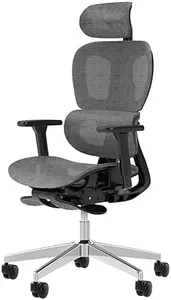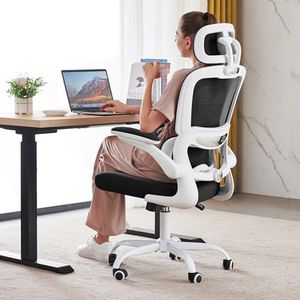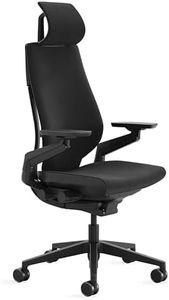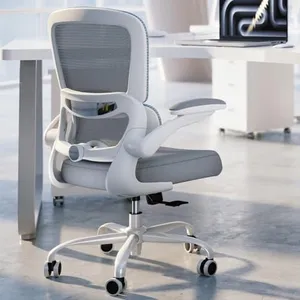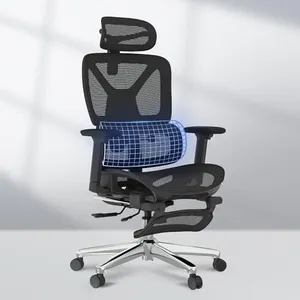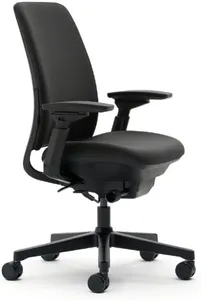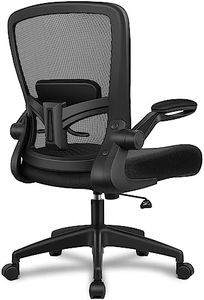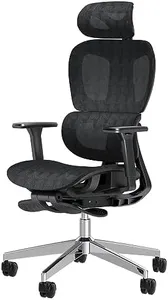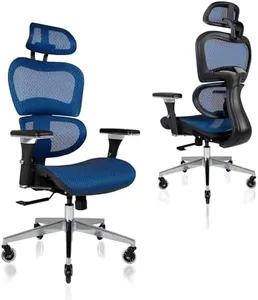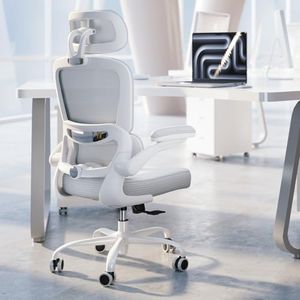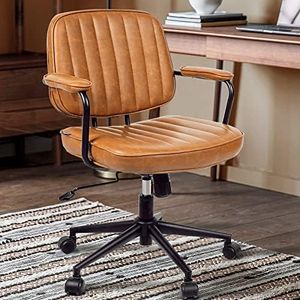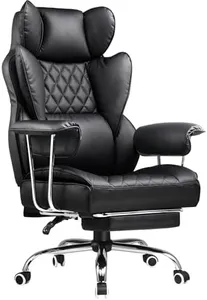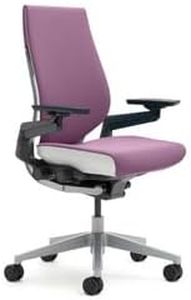10 Best Ergonomic Office Chairs 2025 in the United States
Our technology thoroughly searches through the online shopping world, reviewing hundreds of sites. We then process and analyze this information, updating in real-time to bring you the latest top-rated products. This way, you always get the best and most current options available.

Our Top Picks
Winner
TRALT Office Chair Ergonomic Desk Chair, 330 LBS Home Mesh Office Desk Chairs with Wheels, Comfortable Gaming Chair, High Back Office Chair for Long Hours (Black & White)
Most important from
4779 reviews
The TRALT Office Chair is designed to support long hours of sitting with several ergonomic features that make it a solid choice for office or gaming use. It offers adjustable seat height, backrest recline between 90° and 120°, and flip-up armrests, allowing users to customize the chair to their comfort. The built-in lumbar support and high backrest provide good support for your lower back and upper body, which is helpful if you spend a lot of time at a desk.
The chair seat is made with breathable mesh, which helps keep you cool, and it’s spacious enough to accommodate different body sizes, supporting up to 330 pounds. Mobility is smooth thanks to a 360° swivel base and quiet rolling wheels suitable for hard floors. Assembly is straightforward with all necessary tools included, and the chair comes with a lifetime warranty, which adds peace of mind.
One limitation to note is that the seat depth and width are fixed, which may affect comfort for some users. Despite this, the chair offers a good balance of adjustability and support for extended sitting sessions.
Most important from
4779 reviews
Steelcase Gesture Office Chair with Head Rest - Ergonomic Work Chair with Wheels for Hard Flooring - Comfortable Office Chair - Intuitive-to-Adjust Chairs for Desk - 360-Degree Arms - Licorice Fabric
Most important from
281 reviews
The Steelcase Gesture Office Chair with Head Rest is a high-quality ergonomic chair designed to offer maximum comfort and support for extended periods of use. Its standout feature is its exceptional adjustability, allowing users to tailor the chair to their unique body shapes and work postures. This includes adjustable height, armrests with a 360-degree range, head support, and recline options with three settings. The chair also features a contoured backrest that aligns with the natural curve of the spine, providing excellent lumbar support.
The seat depth of 18.25 inches and width of 27.5 inches accommodate a variety of body types comfortably. The chair's licorice fabric and foam padding ensure a comfortable sitting experience, and it is equipped with wheels suitable for hard flooring, making it versatile for different office environments. However, it is on the heavier side, weighing around 70 pounds, which might make it less mobile.
Additionally, this chair is not customizable, which could be a drawback for users looking for more personalized options. Despite these minor drawbacks, the Steelcase Gesture Office Chair is a solid choice for anyone prioritizing ergonomic comfort and high adjustability in their office chair.
Most important from
281 reviews
TRALT Office Chair - Ergonomic Desk Chair with Adjustable Lumbar Support, Mesh Computer Chair, Executive Chairs for Home Office Comfortable Lumbar Support (White)
Most important from
3198 reviews
The TRALT Office Chair is a solid choice for anyone looking for an ergonomic chair for home or office use. It offers adjustable lumbar support, which helps maintain good back posture and reduces strain during long sitting periods. The breathable mesh seat is spacious and comfortable, supporting users up to 330 pounds while allowing airflow to keep you cool. The chair’s backrest reclines between 90° and 120°, giving you some flexibility for relaxing or focused work, but it offers only two reclining positions, which might feel a bit limiting if you want more precise control.
Seat dimensions are generous at 20 inches in depth and width, providing enough room for most adults, but the armrests are flip-up style rather than fully adjustable, which could be a drawback if you need customized arm support. You can easily adjust the seat height to fit your desk, and the chair swivels 360° with smooth, silent wheels, making it easy to move around on hard floors without damage. The sturdy metal base ensures durability and stability.
This chair is designed for users needing a breathable, supportive seat with basic ergonomic features and good mobility, especially for home office setups. It is not foldable and lacks some features like adjustable seat depth or tilt lock found in other ergonomic chairs. If you require advanced adjustability or extensive reclining options, this chair might feel somewhat limited.
